Chapter: Civil : Principles of Solid Mechanics : Concepts of Plasticity
Plasticity Field Equations and Thick Ring
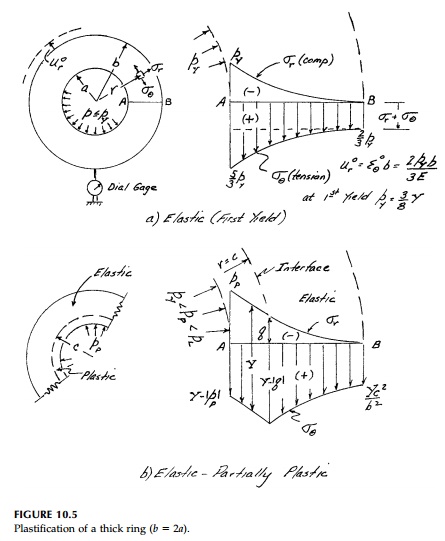
Plasticity Field
Equations
Equilibrium must apply whether the material is
behaving elastically or plas-tically or whatever. Moreover, in the plastic zone
and normal and tangential to the elastic-plastic interface, the shear stress
must equal the shear strength. In the surrounding elastic regions (Figure
10.4) where the stressâ' strain relationship is still linear, the geometric
compatibility requirement in terms of stresses still applies. Thus the field
equations in terms of stress
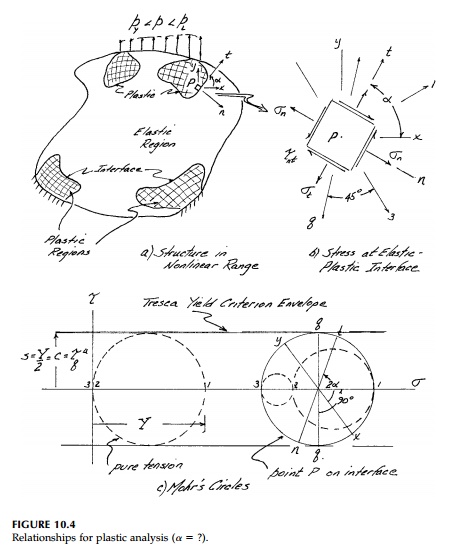

In theory, then, there is enough information (3
equations, 3 unknowns) to solve the field problem if the shape and extent of
the plastic zones can be deter-mined as they develop.* In practice this is very
difficult except for special cases with extreme symmetry and/or conditions
which greatly simplify the equa-tions.
Example-Thick Ring
One such special case where the full plasticity
behavior can be found from first yield to collapse is a thick ring (Figure
10.5). There is only one meaning-ful equilibrium equation:

since there is no change in the field with respect
to . From symmetry the in-plane displacements are:

and these conditions apply throughout the elastic
and plastic range. The elas-tic stress field for internal pressure only is,
from Section 6.5:
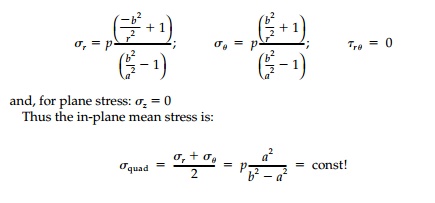
and the state of stress at any point is simply a state of pure shear superim-posed on âhydrostatic tension.â Since for plane stress, Ďθ < Ďz < Ďr the yield
Although the ring yields at this pressure, it will
not fail. As the pressure increases, the yield interface moves outward radially
and, as the plastic zone enlarges, the stresses must adjust to provide
equilibrium while satisfying the boundary conditions that at
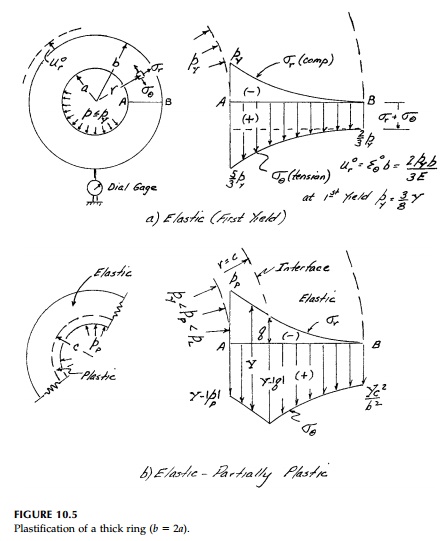
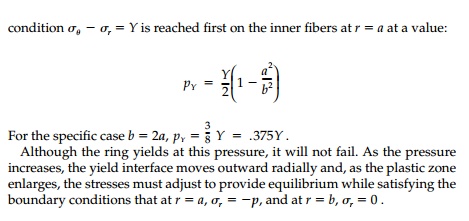
Figure 10.5b shows such a state where the elasticity
solution still applies at r>= c. At the
interface, r c, the outer âring,â which is still elastic, cannot tell
the differ-ence between the radial stress or an equivalent pressure, q,
where
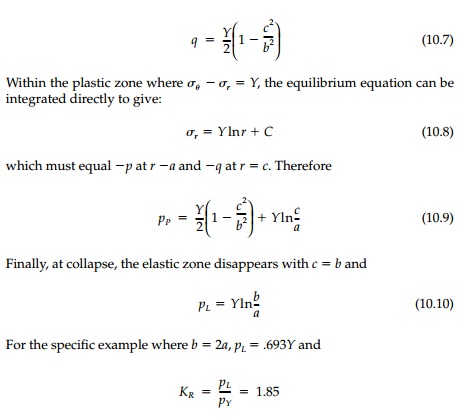
Thus, if a factor of safety of 1.5 was specified to
determine the âallowableâ pressure against yield (i.e., the âworking stressâ)

there would actually be a total safety margin* of
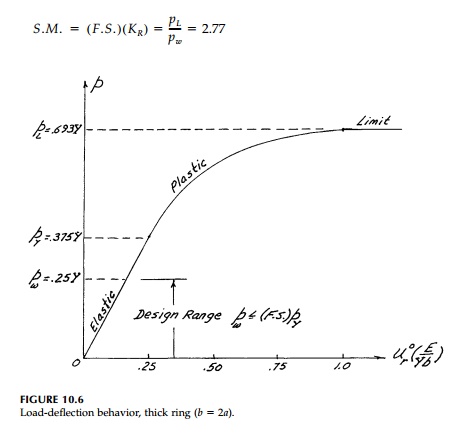
The elastic-plastic radial deformation of the outer
circumference can be found directly since it remains elastic until the limit
state is reached. At r - b with c
sub-stituted for a and q for p in Equation (10.4)
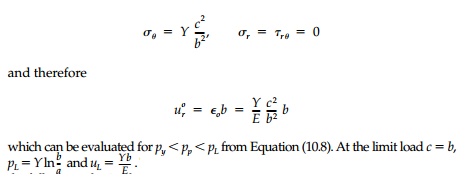
The load-deformation curve shown in Figure 10.6 illustrates
the full-range, elastic-plastic behavior of a ring with b = 2a made of EPS material.
Related Topics